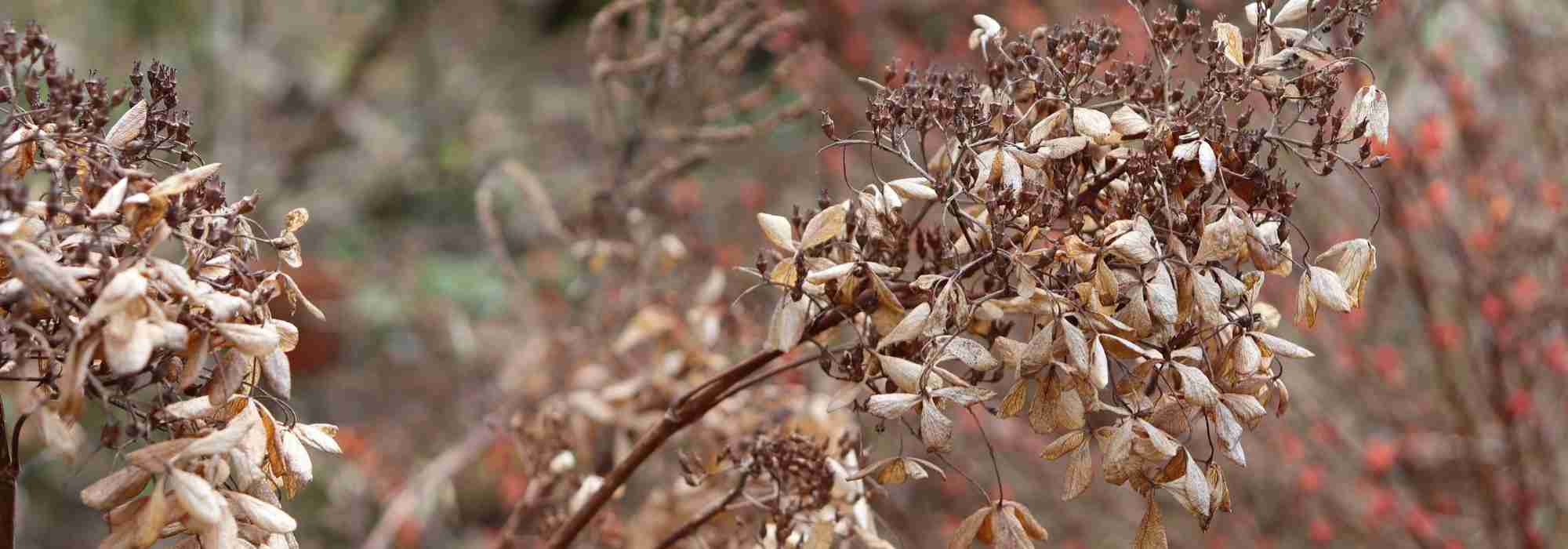
Plant dead or still dormant?
Our tips to find out
Contents
At end of winter and in spring, vegetation begins to restart: buds swell, new leaves appear — marking the start of vegetation recovery. But sometimes some plants are slow to wake. Are they dead over winter, or still in dormancy?
It’s a question gardeners often ask. Indeed, not all plants emerge from their lethargy at the same time! Others, a little sluggish, need a small helping hand to rouse them from sleep. So here is everything you need to know about plants’ dormancy and our tips to determine whether your plant is still dormant or dead.
What is plant dormancy?
It is from autumn until early winter that plants enter dormancy. When day length and temperatures fall, plants receive a signal to protect themselves: they lose their leaves, then slow and stop sap circulation. Deciduous trees become bare and perennial plants dry out and take refuge underground. This process therefore allows them to protect themselves from cold and pass the winter unscathed. Only evergreen plants (those whose foliage remains green in winter) continue to grow.
Read also
Lifespan of perennial plantsHow can you tell if a plant is still in dormancy?
Plant awakening is conditioned by day length, rising temperatures and the return of rains.
Weather conditions can therefore have significant influence on timing of dormancy break. Bear that in mind before comparing with previous years!
Signs of awakening are :
- appearance of first young leaves,
- swelling of buds, in case of a bush.
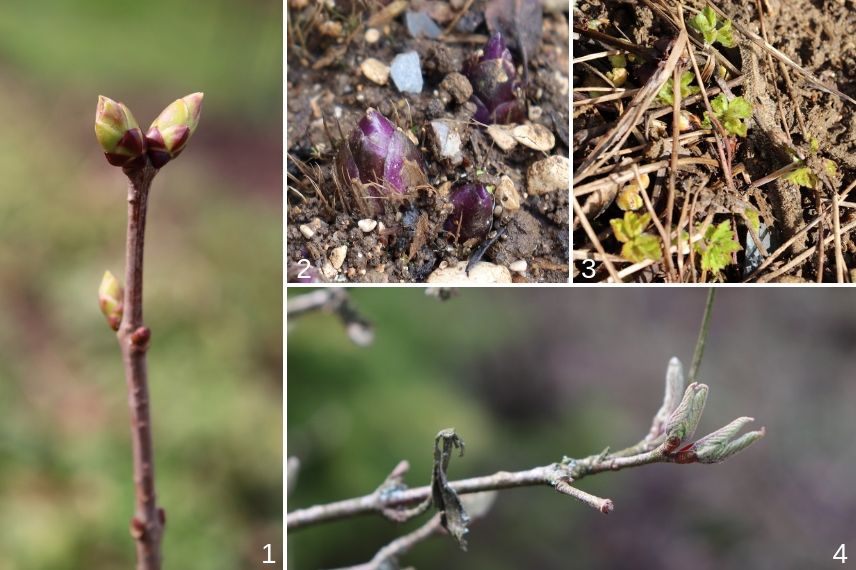
Signs of awakening : 1-lilac buds 2-Hosta buds 3-young leaves of Geranium ‘Rozanne’ 4-young leaves of Viburnum plicatum ‘Watanabe’
However, as you will certainly have noticed in garden, not all plants exit dormancy at same time. Some are in a hurry, such as Cornus mas, Japanese quince or Forysthia, which are among first bushes to flower in late winter, whereas others are much slower to restart… such as some species of hydrangeas, hostas. And it is this relative delay that often causes concern.
Here is a list of some plants for which there is no need to worry if they show no sign of resumption in early spring :
- Albizia,
- Bignone (climbing),
- Calycanthus,
- Clerodendrum,
- Cotinus,
- Hibiscus syriacus,
- Hydrangeas (paniculata, arborescens),
- Lespedeza thunbergii,
- crape myrtle…
and for perennials :
- Astrantia,
- Agastache,
- Epilobium,
- Echinacea,
- Hosta,
- Lythrum,
- Delphinium…
Note that for perennials, take care with slugs: some plants develop their first leaves on time, but these are immediately eaten. Measures are then required! To put them in place, discover our advice sheet : “Slugs : 7 effective ways to fight them naturally”
How to tell a dead plant from a plant in dormancy?
It is fairly easy to tell a plant in dormancy from a dead plant:
A bush is in dormancy if:
- buds are present,
- wood is flexible and green.
A bush is certainly dead if:
- no buds can be seen or only dried buds,
- wood is brittle and black.
To check condition of wood, proceed as follows:
- Start by scratching bark with your fingernail: if it’s green, the bush is alive! If it’s black-brown, that’s not a good sign, continue investigating…
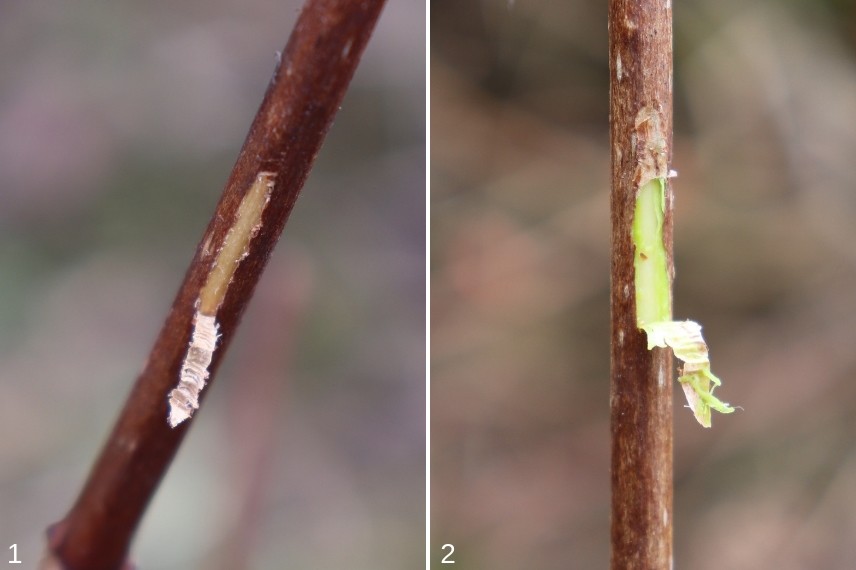
Scratch bark : 1-it’s brown or black –> it’s dead / 2-it’s green –> it’s alive !
- Cut end of a stem: if it’s black-brown, it’s dead. To be sure, continue the test progressing towards base of stem. If wood remains black-brown, stem is dead throughout.
- Carry out these tests on 3 or 4 other branches: your bush may be perfectly alive and carry dead wood… which will need to be removed at next pruning.
For perennial plants, it’s a bit more complicated: some are very late and do not appear until mid or even late spring… The only way to see whether a perennial plant is alive is to lift it out of the ground, scrape the stump and check for presence or absence of buds. This operation is risky and can damage the plant, which is why the best solution is to be patient!
This recommendation also applies to all plants in the garden: give them a chance and wait until the true return of warm weather, in June, before uprooting. Nature sometimes has pleasant surprises!
Watch Olivier’s video to learn whether your tree or bush is dead or not: Recognise a dead tree.
How to help plant bounce back (what to do and what not to do)
Saving a plant that shows no sign of recovery after winter is not easy, unless you can work miracles! Nevertheless, it is always possible to give a little boost to a “latecomer” struggling to wake from dormancy.
If you are in this situation… and your plant is still alive, you can :
- Remove mulch laid at base or on perennial plants : this will allow soil to warm up and will prevent your plant from exhausting itself trying to push out first shoots,
- Remove protective covers, if not already done, to let more light through,
- Water your plant sparingly only if soil is dry!
- Apply a little fertiliser in form of well-rotted compost
- Lightly prune bushes to concentrate sap flow into lower part of plant.
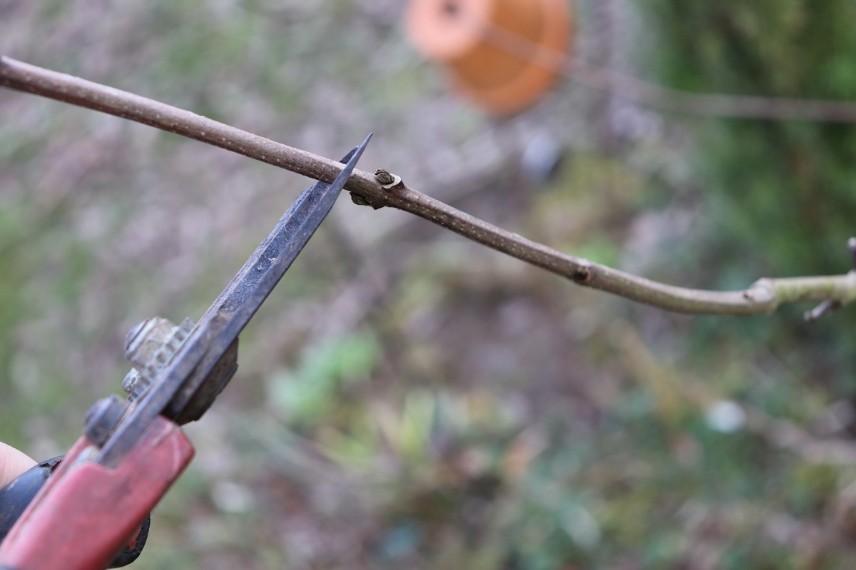
What not to do:
- Water too abundantly; excess water on a plant in dormancy can easily kill it
- Add lots of fertiliser; absolutely avoid massive applications of liquid fertiliser
- Cut everything back to ground level… even if tempting, starting from scratch has never revived a plant!
- Move the plant… unless conditions are unfavourable; you risk subjecting it to additional stress.
Further reading
Unfortunately, your plant has died and you would like to know why… Often, its death is natural and simply marks the end of its life. Sometimes, it’s due to weather conditions or the result of mishandling… To find out, read our article: “10 ways to kill a plant… naturally”.
- Subscribe!
- Contents
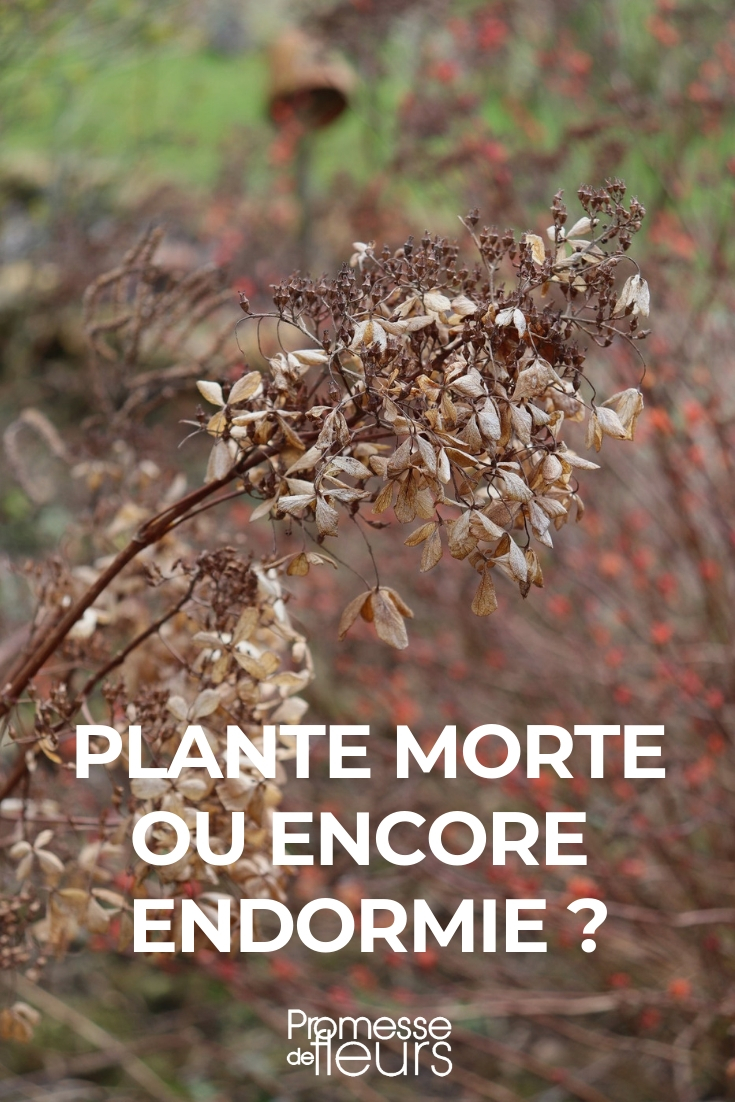































Comments